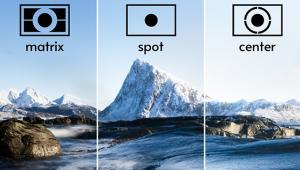Print Permanence; A Summary Of The Epson White Paper; A Response From Eastman Kodak Company
Photography is a wide-ranging field that engenders passion in its practitioners,
and like all great forms of expression creates opinions formed through experience
and reflection. In its early days one of the great debates was: Is Photography
Art? This was the subject of many essays and heated discussions among players
and spectators. Today, issues such as film vs. digital, format choices, the
validity of computer generated images, photography as exploitation or revealer,
and even the merits of ink jet vs. silver prints cause similar debate. We are
opening this department up to readers, manufacturers, and retailers--in
short, everyone who lives and breathes photography and who has an opinion about
anything affecting imaging today.
Here's how to get involved: write us an e-mail at editorial@shutterbug.com
or send us a letter with a proposed topic and a synopsis of your idea. Once
approved, we'll ask you to send us about 500-1000 words on the subject
chosen. The idea here is not to push any product or wave any flag, but to create
discussion about photo and imaging topics of the day. We reserve the right to
edit whatever you send in, although we will never edit intention or opinion
but only for length and, hopefully, for clarity. We reserve the right to publish
your work on our website as well, so you can join the archives and be a resource
for opinion for years to come.
So, get thinking and writing and share your Point of View.
--George Schaub
Editor's Note: We have long advocated that standards
be accepted and put in place regarding the archival qualities and attributes
of various forms of inkjet and dye sublimation, or digital printing. Lacking
these standards, we have come to rely on the testing methods of manufacturers
to give us a good approximation of print life span under various lighting and
storage conditions. To continue this debate and hopefully encourage the establishment
of standards, we are publishing a summary of the recently published Epson White
Paper on this issue along with a response from the Eastman Kodak Company. If
you'd like to join in on the debate or have a response to these articles
please log into our Forums under Inkjet Printing at: www.shutterbug.com.
We begin with the Epson White Paper summary, and follow with the Kodak response.
We trust you will find both informative.
--George Schaub
Photographs are among people's most valued possessions. During times
of natural disaster, such as fires and hurricanes, heroic efforts are often
made to save photos because while many material possessions can be replaced,
photographic prints are usually irreplaceable. Negatives are lost, the hard
drives or digital media on which digital images are stored can be damaged, or
file formats become obsolete. Photographic prints, however, are easy to store
and always easy to view, so they continue to be the best way to preserve memories.
People expect the prints of their visual memories to last, whether hung on a
wall, displayed on a desk, or stored in an album. Epson's print permanence
advances have been designed to keep important memories lasting a lifetime. But
answering the question of how long photographic prints will last is a complicated
matter, and most people have not been fully aware of the weaknesses in print
durability since the introduction of color photography in the 1950s.
Because of our commitment to research and development to improve print permanence,
Epson wants the public to be informed about the many factors that can affect
the longevity of their photos and to be aware of potentially misleading print
permanence claims so they can take the appropriate steps to ensure their important
memories last for generations.
Epson believes there should be tough standards for measuring print longevity
instead of making imaging products with inferior print permanence look better
by lowering industry accepted practices.
Until the 1950s most photographs were in black and white. If properly processed,
these black and white prints had incredible resistance to the elements that
cause fading: light, water, and atmospheric gasses. In fact, many of these early
photographs remain in excellent condition today and still reside in family collections
and museums.
Color prints came into widespread use during the late 1950s. The leading photographic
manufacturers of the time settled on a dye-based system of producing color prints.
The prints were, indeed, attractive; but they unfortunately had significantly
less permanence than the black and white prints to which consumers were accustomed.
The result was that by the 1970s and `80s countless cherished photographic
memories, important historical records and works of art had faded and, in some
cases, virtually disappeared.
Today, inkjet prints made from digital files can be made on a wide variety of
papers with different types of inks. How long one of these prints will last
is determined by the ink formulation, the paper on which the image is printed,
the manner in which the printer lays the ink down on the paper, and the storage/display
conditions under which the photo is kept. Inkjet manufacturers design their
printers, inks, and papers as a system to maximize print permanence and image
quality. Therefore, buyers should beware of any one-size-fits-all claims of
a non-system product for longevity and quality because variables in any of these
factors can yield drastically different results.
The primary factors that affect print longevity are light, water, pollution
(including ozone), temperature, and humidity. Epson's state of the art
pigment-based inks offer an unmatched resistance to damage from exposure to
light, water, temperature extremes, humidity, and provide good resistance to
ozone. We recognize that ozone is a threat to the longevity of prints using
certain Epson paper and dye-based ink combinations. Placing these type of prints
(as well as prints made with other manufacturers' dye-based inkjet prints)
in a frame behind glass provides adequate protection against atmospheric contaminants.
Therefore, we want to be sure customers have the right information to make the
best choices to meet their needs, which is one reason we don't want to
see industry accepted practices for print permanence lowered. When displayed
behind glass or in dark storage, prints made with Epson pigment-based inks printed
on papers designed for pigment-based inks yield the industry's leading
image permanence ratings.
The challenge in determining print permanence is that real-time testing is not
practical. All manufacturers must use accelerated methods for predicting print
longevity. Epson endorses the use of industry accepted practices that simulate
exposing a print to at least 450 lux--a measurement of the amount of illumination--for
10-12 hours a day to predict how long a print will last. Eastman Kodak has chosen
to dramatically depart from industry accepted practices and publishes their
own data using a 120 lux calculation, which is 3.7 times less illumination.
Eastman Kodak also conducts its print longevity tests at a much higher degree
of acceleration over a shorter period of time which adds more error to their
simulated dimly lit room. In addition, they do not follow general industry practices
by providing test results only with 100 percent Ultraviolet (UV) filtration,
which blocks the damaging effects of UV on all photographic materials.
These deviations from industry accepted practices enable Eastman Kodak to make
display life predictions that are up to five times longer than they would be
under industry accepted practices. A print with what most would consider a realistic
lightfastness rating of 20 years under industry accepted practices will suddenly
be rated at over 100 years. In other words, those lower standards make an inferior
product look like it is on par with Epson's leading archival solutions.
If Epson were to use Eastman Kodak's testing conditions, some Epson prints
could have lightfastness ratings over 1000 years. While that may make good advertising
copy, we do not believe it is credible, and we refuse to mislead customers that
way.
Currently there is no ISO print permanence standard for digitally printed photographs,
and there is no prediction as to when, or even if an ISO standard will be established.
Until there is an ISO standard, Epson chooses to use rigorous test practices
for print permanence because consumers' memories and professionals'
reputations are at stake. After several real-time decades of observation, most
have seen how traditional silver-halide color prints fade in a variety of everyday
environments. So far, these observed rates of fading seem in alignment with
the rates of fade predicted by current industry accepted practices for print
permanence.
We highly recommend consumers and professionals look to independent third-party
laboratories that do comparative apples to apples testing using accepted industry
practices rather than any testing that is based on a single manufacturer's
attempt to set a lower standard. The latter is much like an automobile manufacturer
setting up their own biased methods to determine a more favorable miles per
gallon rating.
Of course, not all prints have to last forever, but often one does not know
the importance of a print until many years in the future. Sadly, many of the
most important prints are displayed in well-lit environments suitable for enjoying
photography, not the dimly lit conditions Eastman Kodak uses for its display
life predictions.
We at Epson believe consumers should have access to unbiased comparative print
permanence data based on uniform rigorous test criteria so they can make informed
choices about the photographic materials on which they print their precious
memories. The long-term survival of photographs and our photographic heritage
must not be shortchanged by overstating the permanence characteristics of any
paper, ink, other imaging material, or their combinations.
Photographs are simply too important to our civilization to be subjected to
undisclosed compromises about their longevity.
For more detailed information please refer to "Print Permanence White
Paper" which can be accessed from www.epson.com/printpermanence.
Epson is a registered trademark of Seiko Epson Corporation. Third party and product names are trademarks or registered trademarks of their respective holders.
































